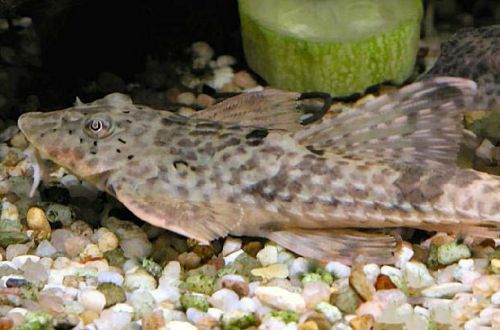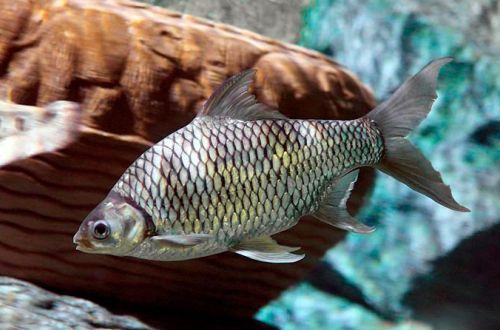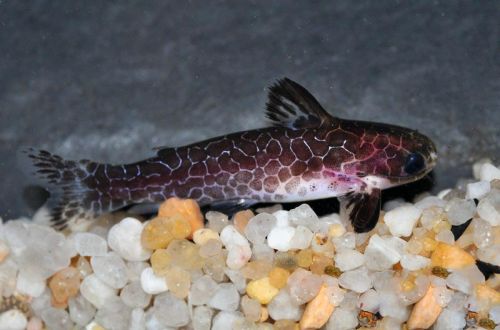
catfish loricaria
Loricaria catfish, scientific name Rineloricaria fallax, belongs to the family Loricariidae (Mail catfish). An easy to keep peaceful fish that will be a great addition to the community of South American species.

Contents
Habitat
Native to South America. It occurs in the upper basin of the Rio Branco and Rupununi rivers in Guyana and the Brazilian state of Roraima. Inhabits shallow rivers and streams. Prefers regions with sandy substrates and areas with accumulations of fallen leaves, branches, submerged snags, etc.
Brief information:
- The volume of the aquarium – from 80 liters.
- Temperature – 15-25°C
- Value pH — 5.8–7.8
- Water hardness – soft high hardness (1-25 dGH)
- Substrate type – sandy
- Lighting – subdued
- Brackish water – no
- Water movement – light or moderate
- The size of the fish is about 15 cm.
- Nutrition – any sinking food with herbal supplements
- Temperament – peaceful
- Content singly or in groups
Description
Adult individuals reach a length of 15 cm. Catfish has a strongly elongated slender body with large pectoral and ventral fins. The head is triangular in shape with a sucker-shaped mouth. The color is gray with a pattern of dark specks. Appearance and colors make it possible to hide against the background of sandy soil or appear to predators as a stick, branch and other woody debris.
Sexual dimorphism is weakly expressed. Males can be distinguished from females by the presence on the head and on the first rays of the pectoral fins of special small bristles called odontots.
Food
An omnivorous species, it will accept most popular dry, frozen and live foods. In aquariums, it often feeds on food leftovers from other fish, thereby contributing to the purification of the soil.
An important addition to the daily diet are herbal supplements, such as slices of cucumber, zucchini, blanched lettuce or cabbage.
Maintenance and care, arrangement of the aquarium
The optimal size of the aquarium for a group of 2-3 fish starts from 80-100 liters. In the design, it is desirable to use sandy soil, several natural or artificial snags and other decoration elements that can act as a shelter.
If breeding is planned, secluded places in the form of caves or grottoes should be provided in the design. As the latter, some breeders use ordinary PVC tubes. In them, catfish will lay a clutch for their eggs.
In the habitats of Catfish Loricaria, aquatic vegetation is usually absent, but in the aquarium it may well be among the thickets of plants.
Catfish feel great in a wide range of hydrochemical parameters, which allows you to use ordinary settled tap water without the need to raise or lower pH and dGH. Prefers subdued lighting levels.
Aquarium maintenance is standard and includes a weekly replacement of part of the water with fresh water, removal of organic waste and equipment maintenance.
Behavior and Compatibility
It is considered one of the most peaceful representatives of catfish. Differs in a meek calm disposition. It is compatible both with representatives of its own species and with other peaceful fish of a comparable size. Good tankmates will be Goldfish and other species that prefer relatively cool water.
Breeding / breeding
Breeding is quite simple. The only difficulty is getting a formed pair. Not every male and female can produce offspring. The fish themselves choose their partner among relatives, how exactly the choice is made is unknown. It is recommended to either purchase a ready-made pair, or buy a dozen young catfish. In the latter case, during maturation, it is likely that at least one male and female will be able to create a pair.
In home aquaria, spawning is largely random. The stimulus is a diet rich in vegetable and protein supplements, such as pieces of green vegetables and live / frozen bloodworms, brine shrimp, etc.
With the onset of the mating season, the male chooses a place for future masonry. As mentioned above, this place can be caves, grottoes in design, or the same PVC pipes. An important condition is that the diameter of the hole must be at least 5 cm.
The female lays several dozen eggs inside the cave/tube. The male fertilizes the clutch and remains to guard it. At this time, he can be hostile towards the neighbors in the aquarium.
The incubation period lasts 4-5 days. After another 2–3 days, the fry begin to swim freely, and from that moment on, the male ceases to protect the offspring.
Fry should be fed with crushed dry flakes, granules or special foods for juvenile aquarium fish, as well as soft vegetable matter. For example, lettuce leaves, cabbage doused with boiling water or pre-frozen. Such procedures soften plant fibers.
Fish diseases
In aquariums with a healthy ecosystem, proper nutrition, and the absence of threats in the form of aggressive fish, cases of disease are very rare. Symptoms of the disease will usually indicate management problems (injuries, poor water quality, poor feed, etc.). If the root causes are eliminated, then the body of the catfish can independently cope with the disease. Otherwise, medical treatment will be required, more details in the section “Diseases of aquarium fish”.





